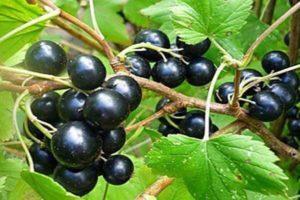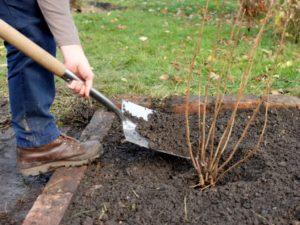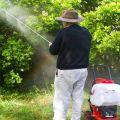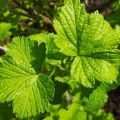What is the distance between currant bushes should be when planting from each other
When planting currants, a certain distance between the bushes is observed, other nuances are taken into account that determine the growth of plants and the quality of the crop. Proper care and optimal environmental conditions are essential. The most suitable for the culture is a temperate climate. The advice of experienced gardeners will help you grow resistant shrubs and get a bountiful harvest.
Necessary conditions for growing currants
Perennial shrubs bear fruit in the 2-3rd year after planting. The life span of plants is 25-30 years. The highest productivity of individual black currant branches is observed within 4-5 years, red currant branches - for 6-8 years. The minimum list of requirements is as follows:
- groundwater level - from 1-1.5 m ;
- natural light - at least half daylight hours ;
- fertile soil - light loamy, sandy loam soil with a low level of acidity or neutral ;
- soil moisture level - regular watering of the bushes in order to prevent drying out (mulching eliminates the need for regular monitoring of soil moisture, frequent loosening and weeding) ;
- the use of fertilizers - organic for sandy and heavy soil, lime for acidic soil.
Distance between bushes
To get the expected results, you must definitely understand at what distance to plant currant bushes from each other. The optimal distance between the bushes is 1 m.When planting in one row, a distance of 0.8 to 2 m is allowed, when planting in several rows - up to 3 m.Row spacing is allocated 2-2.5 m.
The parameters change depending on the variety of currants chosen for planting, the location of the land plot, the characteristics of the soil and the formation of bushes. If the crown is spreading, the bushes move as far as possible from each other. For straight-growing currants and compact plants, the distance is minimal.
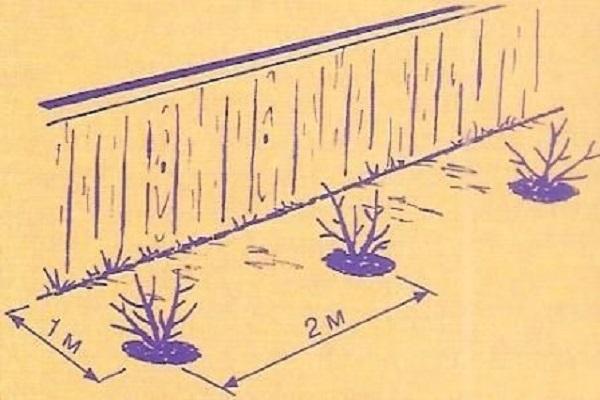
At what distance from the fence to plant currants?
A certain list of planting norms is provided. The minimum distance of the bushes from the fence that separates the neighboring plot is 1 m. If you need to plant red, yellow or black currants closer to the fence, you can agree on this with the owner of the neighboring plot by making a written agreement.

Growing currants without trellises
Currants are planted with the onset of autumn. If the weather is warm, planting dates are extended until mid-October. With early frosts, the bushes are added dropwise, planting is carried out in the first spring month.On illuminated plots of land, seedlings with developed roots take root well.
Dig holes 35-45 cm deep separately or prepare a continuous trench. It is recommended to wait for the earth to settle and start planting shrubs a week after the formation of the depressions. Compost or rotted manure is placed on the bottom of each hole. For soils with a high level of acidity, an oxidizing agent is used in the form of chalk or eggshells crushed in a coffee grinder.
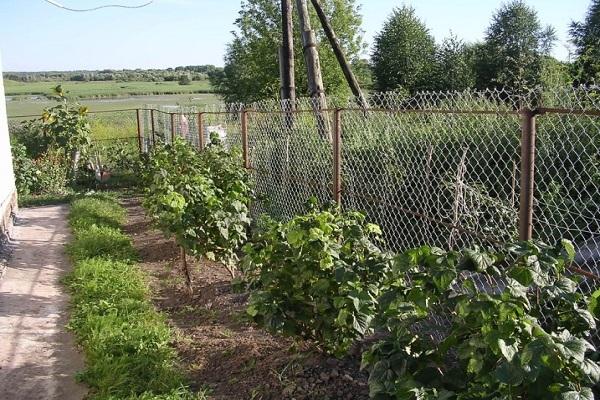
Ash has to be poured into the ground every year, since the calcium contained in it is poorly retained and is washed out by groundwater.
The soil is watered, the seedlings are placed in holes at an angle of 45 °, so that additional roots and new shoots are better formed (if you plant the plants without a slope, they will be single-stemmed). The spread roots are buried into the ground 5–7 cm above the root collar and gradually fall asleep. If this scheme is followed, strong bushes grow.

It is more convenient to plant plants together, when one person holds the seedling, and the second bury it. Water the plants immediately using up to 4 buckets of water. The earth is carefully tamped in the direction of the trunk. Then the bushes are cut in half, with a strong root system - by a third.
Thanks to pruning, the balance of the root system is restored, good growth is observed in the very first year.
Gardening tips
In order to create a beautiful garden, it is necessary to provide competent placement, taking into account compatibility. It is advisable to select separate areas for different types of plants. If this is not possible, they retreat several meters from the fruit trees so that they do not shade the currants. It is recommended to proceed as follows:

- Select areas with a groundwater level of at least 1 m from the ground surface.
- Choose a flat piece of land. A slight slope is allowed. For a good harvest, it is important that water and cold air do not stagnate. Areas with a height are not suitable for currants, since in the summer the bushes suffer from dry wind.
- Remove wheatgrass along with the roots or pre-treat the soil with herbicide so that the weed does not drown out young currants and reduce the quality of the harvest of mature bushes.
- Plant three bushes in each hole in order to increase the yield by 2-3 times. In this case, an angle of 45 ° is also maintained.
- Prepare foliar dressing in cloudy weather. During the flowering period, plants are sprayed with a product prepared on the basis of manganese sulfate (1 tsp) and boric acid (0.5 tsp). The components are dissolved in 10 liters of warm water up to 40 ° C. When forming ovaries for the same amount of liquid, use a glass of superphosphate and 3 tbsp. l. urea. In cloudy weather, plants absorb nutrients better, the yield and quality of berries increase several times.
Currants do not require special care, it is enough to provide basic conditions. However, in order to increase yields, it is worth listening to the advice of experienced gardeners and making additional manipulations. The planting of bushes is carried out taking into account the norms for planting plants, if necessary, they are agreed with the owner of the neighboring site.
